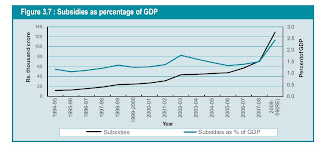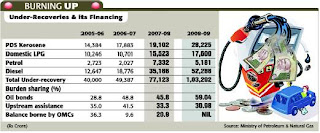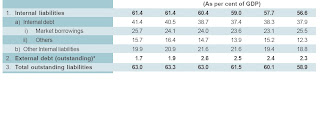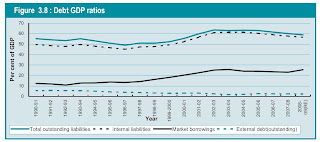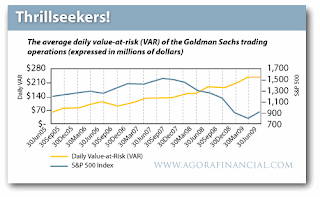Efficient Market Hypothesis claims that share prices change instantly to reflect all available information. However, it is now widely acknowledged that, apart from other factors, markets are exposed to noise trading and random blips which rapidly and continuously destabilizes instantaneous prices. Therefore, theoretically atleast, it becomes possible to make money if it is possible to both access the rapidly changing information and react swiftly in response by executing trades accordingly. The challenge is that the market participants, or atleast the major players, have become fairly efficient in doing both these in fairly short time that these opportunities tend get traded away even before the markets become aware.
To capitalize on precisely such fleeting opportunities, in recent years trading has gravitated towards very high speed computers whose programs take "real-time" share prices and use it to detect or even predict the next instantaneous twitch in the stock market. Then using an algorithmic formula, the computers can buy and sell stocks within fractions of seconds, with the bank or fund making a tiny profit on the blip of price change of each share.
As Bloomberg reports, 46% of the daily volume in the major global equity markets is handled through such high-frequency strategies. In the US markets, HFT firms represent approximately 2% of the 20,000 or so trading firms and account for 73% of all US equity trading volume. They also include proprietary trading desks for a small number of major investment banks, less than 100 of the most sophisticated hedge funds and hundreds of the most secretive proprietary shops. It is estimated that the annual aggregate profits of low latency arbitrage strategies exceed $21 billion, of which Goldman Sachs alone controls 20% or $4 bn a year.
These programs sift through thousands of quotes to look for patterns in equity price movements and makes bets in hundredths of a second to exploit tiny price swings in equities and discrepancies in futures, options and exchange-traded funds. Such super-fast trading takes care of the problem of "latency", or the "delay between a trading signal being given and the trade being made." As Paul Wilmott writes in the Times, "There’s nothing new in using all publicly available information to help you trade; what’s novel is the quantity of data available, the lightning speed at which it is analyzed and the short time that positions are held."
Though traders and supporters feel that this will make markets even more efficient and increase market liquidity, there are serious concerns about how such trading methods can distort the underlying markets, especially when it gets adopted by large numbers of traders. However, as Wilmott points out, previous experience from such common trading strategies like dynamic portfolio insurance (dynamic calibration of fund portfolios to reflect market movements) shows, the positive feedback associated with a popular trading strategy can have damaging effects on the underlying markets. He writes,
"If a fall in the market leads to people selling according to some formula, and if there are enough of these people following the same algorithm, then it will lead to a further fall in the market, and a further wave of selling, and so on... A rise in price begets a rise. (Think bubbles.) And a fall begets a fall. (Think crashes.) Volatility rises and the market is destabilized. All that’s needed is for a large number of people to be following the same type of strategy. And if we’ve learned only one lesson from the recent financial crisis it is that people do like to copy each other when they see a profitable idea."
Or sample this from Zero Hedge, which claims that HFT traders have created an unequal playing field for all investors,
"These HFT's determine the overall market direction, usually without fundamental or technical reason. And based on a few lines of code, retail investors get suckered into a rising market that has nothing to do with green shoots or some Chinese firms buying a few hundred extra Intel servers: HFTs are merely perpetuating the same ponzi market mythology last seen in the Madoff case, but on a massively larger scale. When it all blows up, the question is whether the SEC will go after the perpetrators of this pyramid with the same zeal that it pursued Madoff himself... HFT has become the biggest cash cow for Wall Street... Long-term buy and hold investors have already departed the market, as they have realized the traditional methods of approaching stock valuation such as fundamental and technical analysis have gone out of the window and been replaced by such arcane concepts as quant factors."
And Felix Salmon describes it as,
"a black box which very few people understand, and that one thing we’ve learned over the course of the crisis is that if there’s a financial innovation which doesn’t make a lot of sense and which is hard to understand, there’s a good chance there’s systemic risk there."
Jon Stokes has an excellent description of the world of HFTs with its global network of supercomputers with "predatory algorithms (that) trawl the information stream, competing every millisecond to gain an informational advantage over rivals". He writes,
"Not everyone is convinced that liquidity is worth the attendant risks of HFT, which are very difficult to quantify when you're looking at HFT's potential impact on the market as a whole... there's... the possibility that HFT, with all of its enormous speed and complete automation, poses a larger systemic risk to our markets... It could be that this fast-moving system as a whole could quickly and dramatically fail in some unforeseen way, due to a combination of an external shock and unseen internal fragility... HFT's combination of speed, volume, secrecy, and lack of human oversight and intervention worries even those who trust the human players not use their machines to cheat at the game."
Update 1
NYT op-ed on HFT and flash trades.
Update 2 (7/3/2010)
Richard Olsen argues that the discipline of high-frequency trading can revolutionise economics and finance by turning accepted assumptions on their head and offering novel solutions to today’s issues. He writes, "High-frequency data is a term used for tick-by-tick price information that is collected from financial markets. The tick data is valuable, because they represent transaction prices at which assets are bought and sold. The price changes are a footprint of the changing balance of buyers and sellers."

